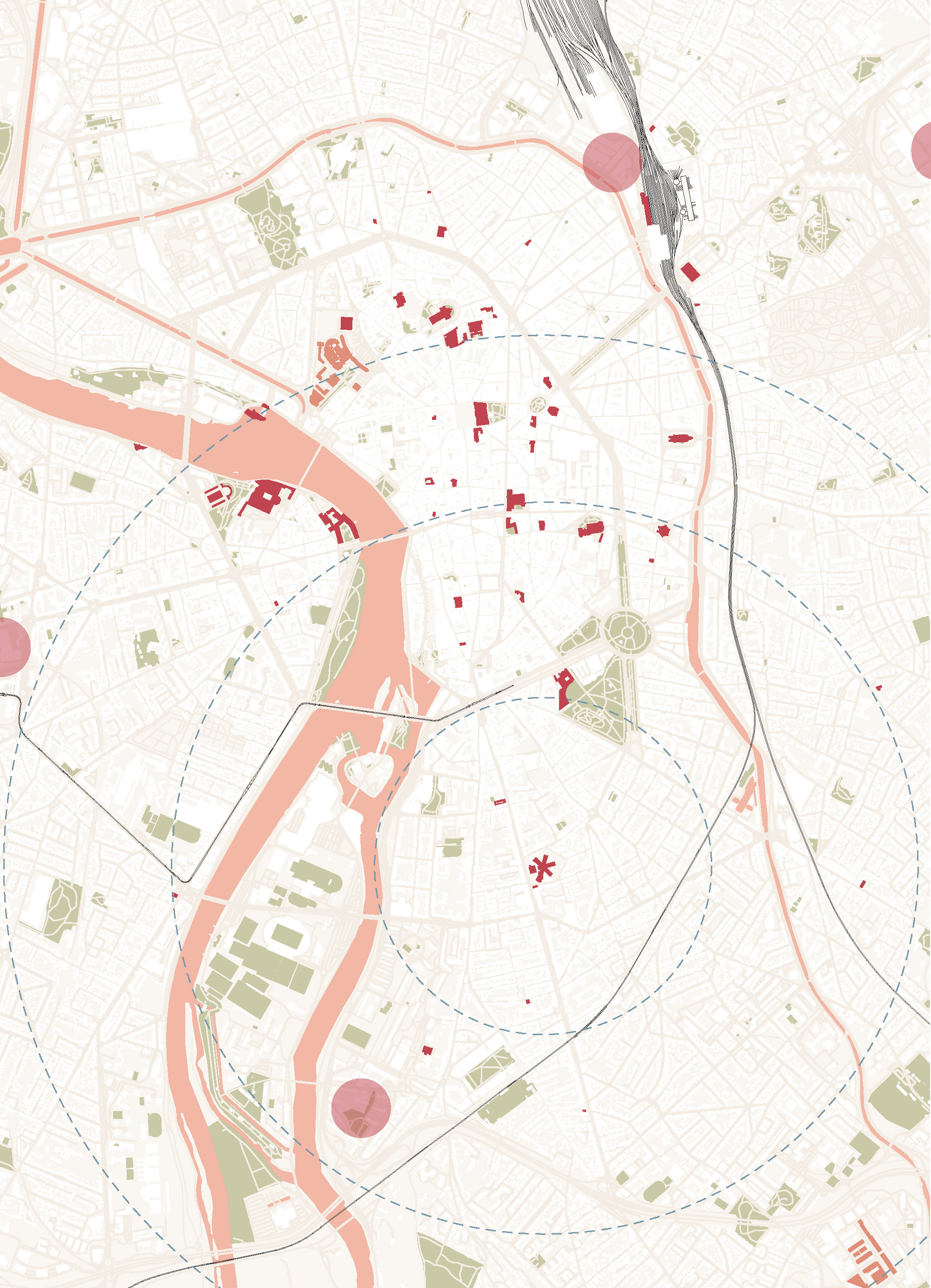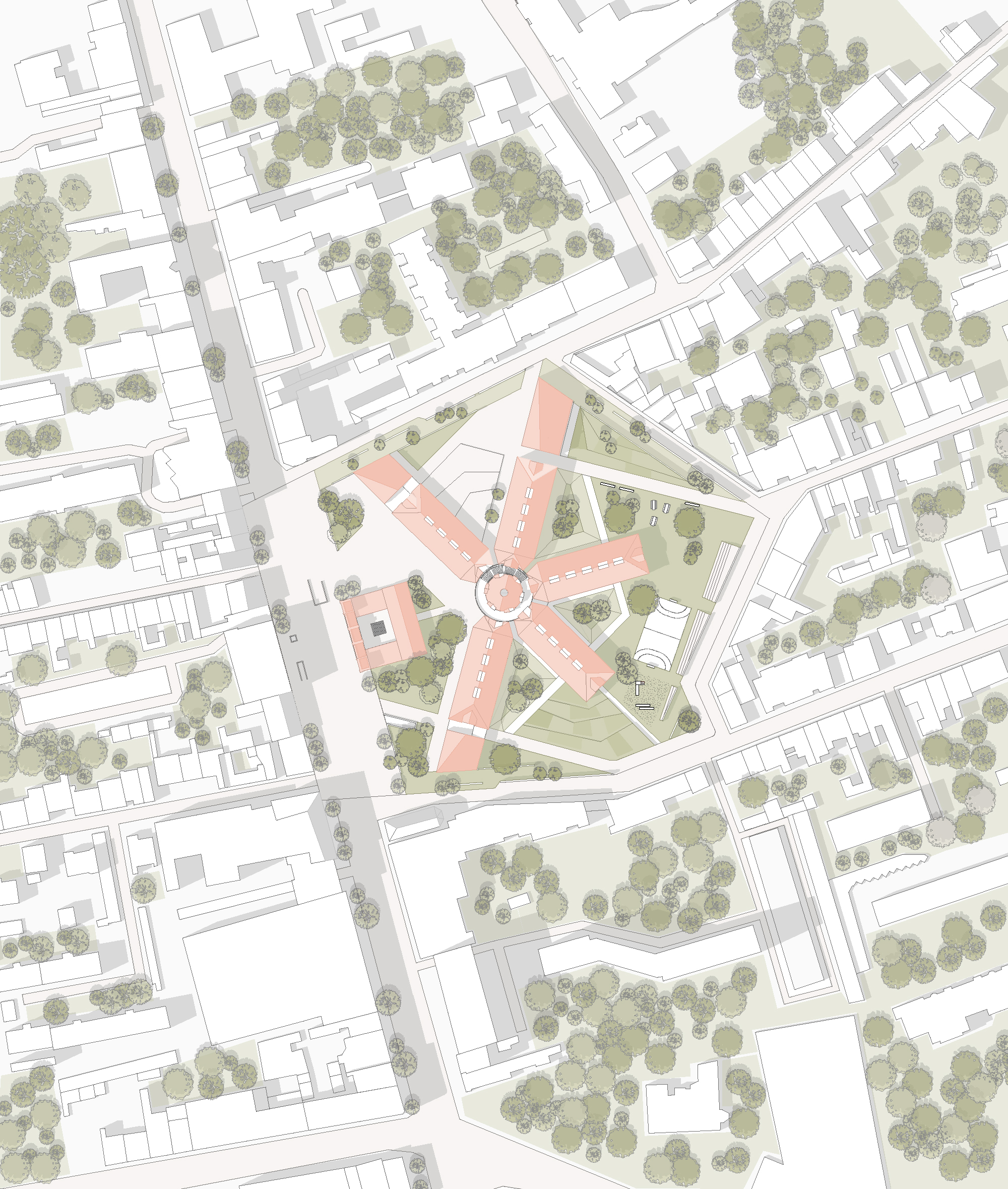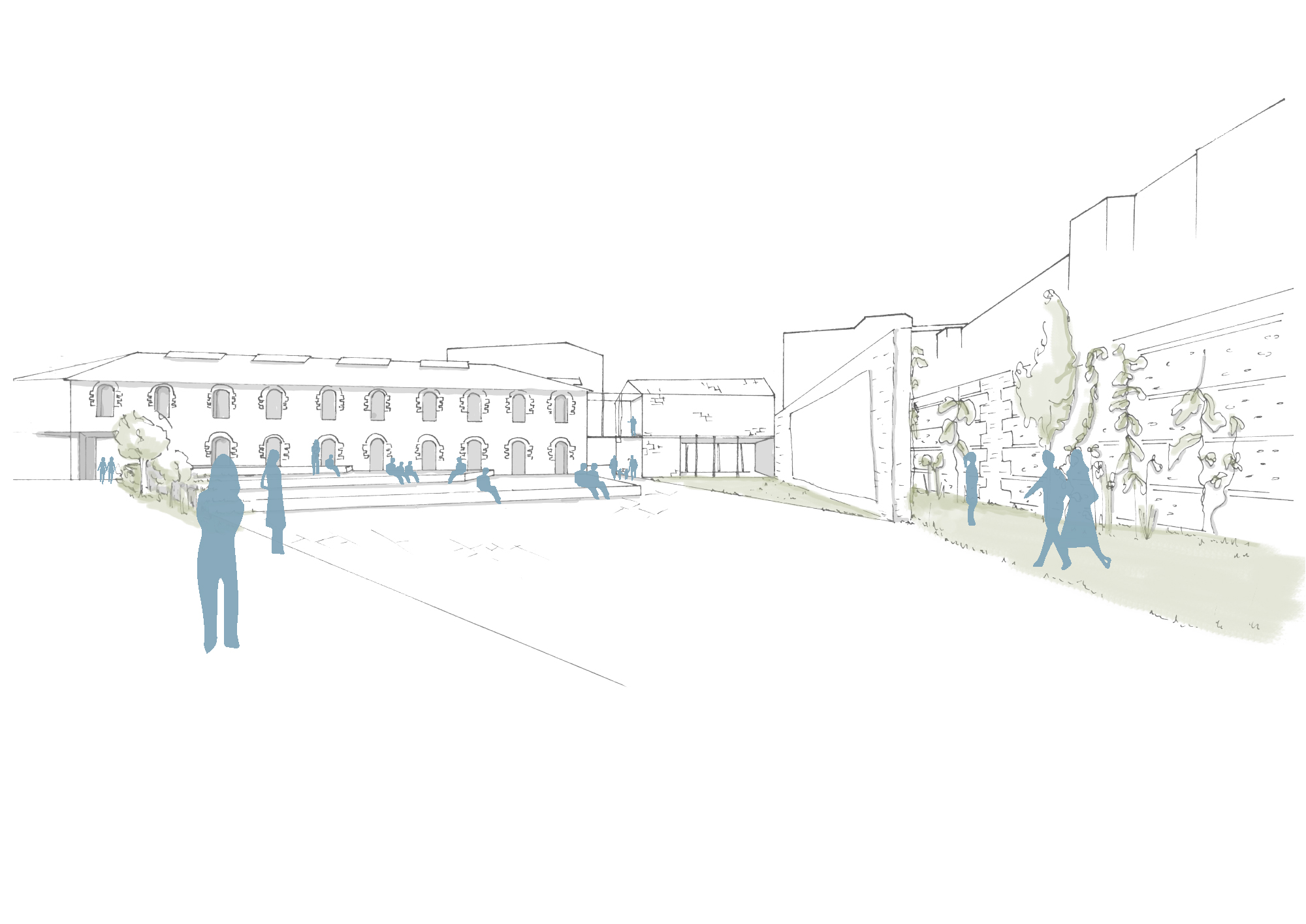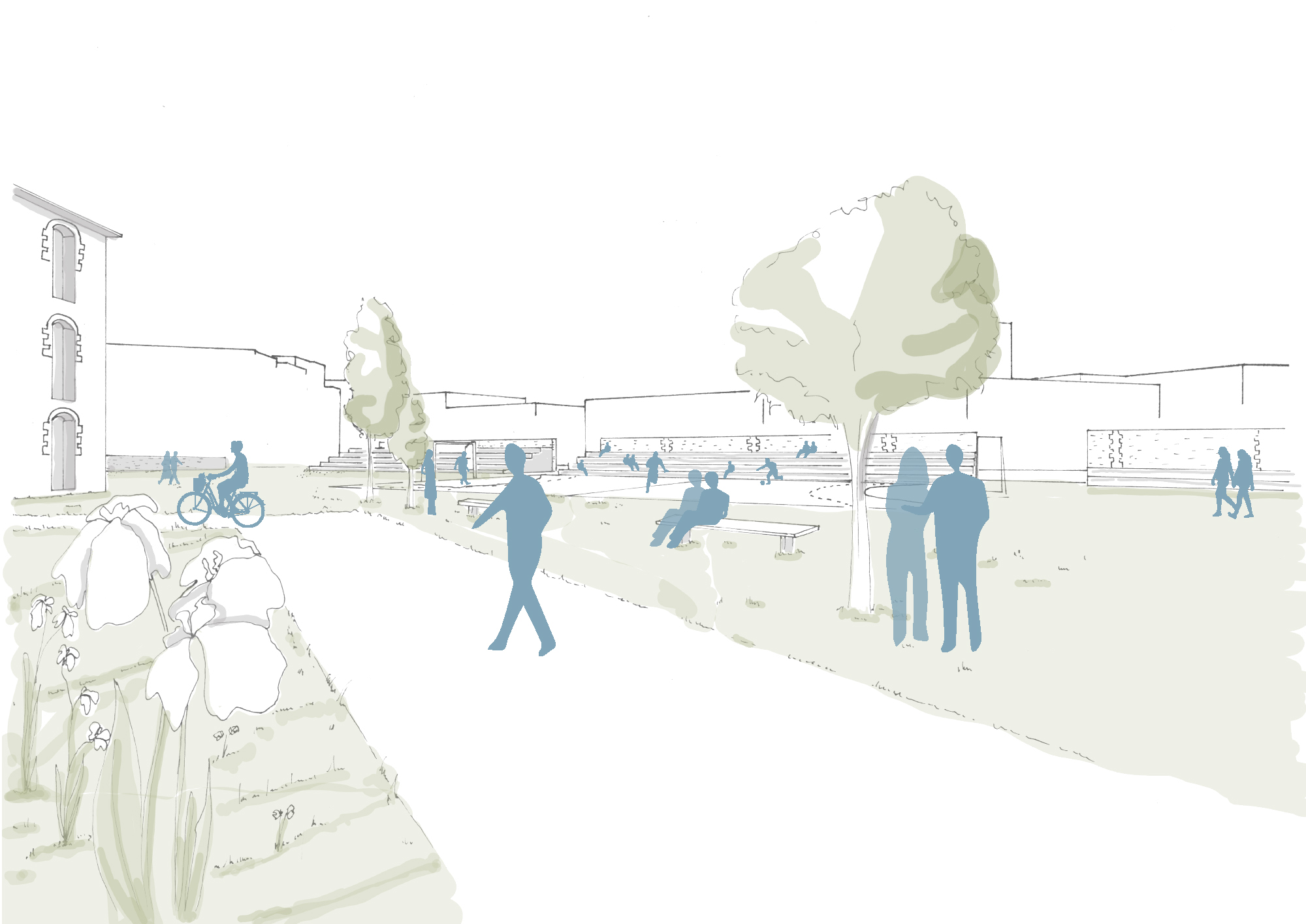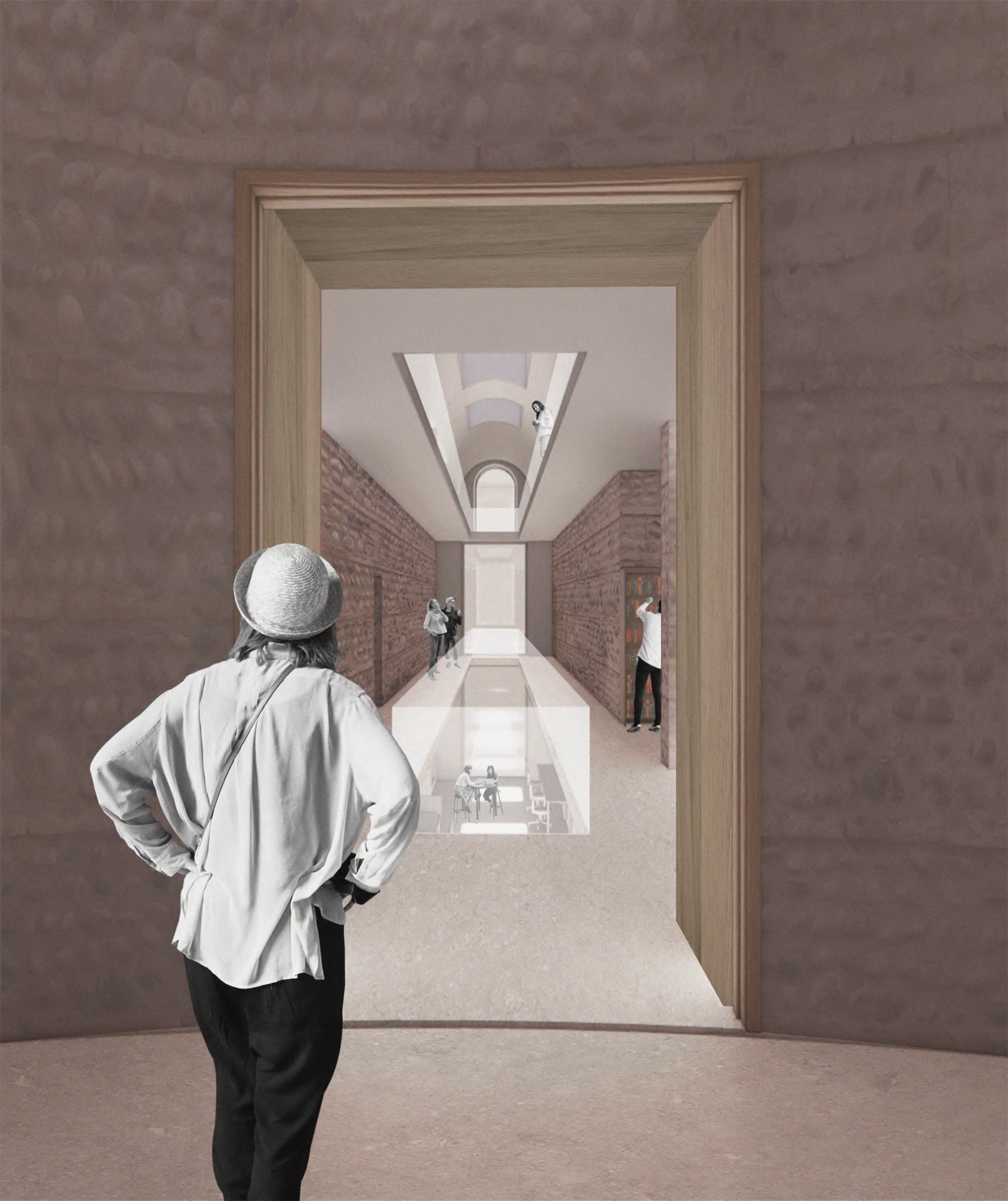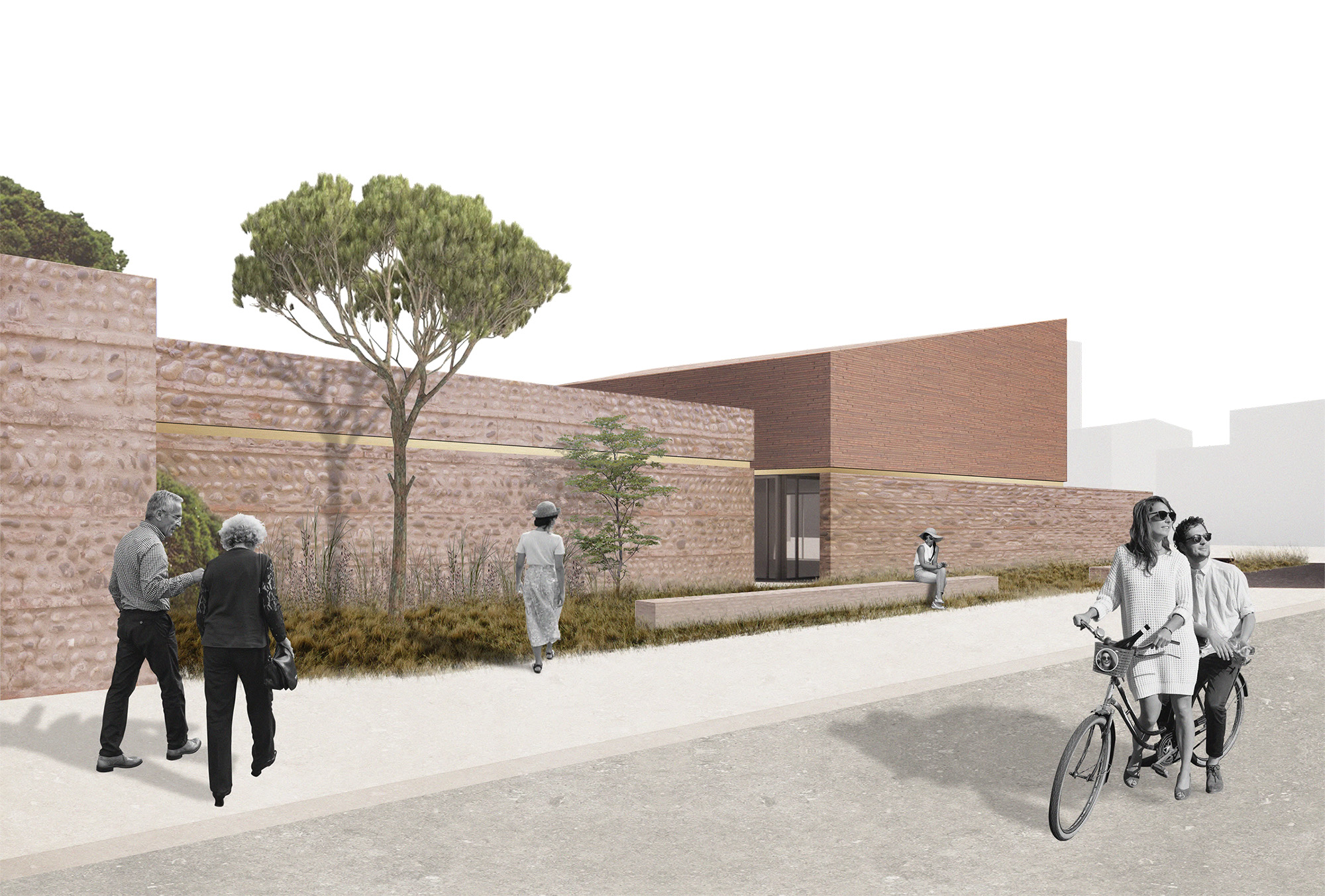Lucie Berthet
Reconvertir l’ancienne prison st- Michel, patrimoine carcéral toulousain
La prison Saint-Michel est une des rares traces de l’architecture carcérale toulousaine du XIXe siècle. Délaissée depuis 2010, elle laisse une enclave de 20 000 m² murée et fermée dans le quartier du même nom. Le quartier Saint-Michel est un ancien faubourg situé au sud de l’hypercentre de Toulouse, bien connecté à celui-ci ainsi qu’au reste de la ville par les transports en commun. Le quartier est principalement résidentiel, apprécié des étudiants, mais oublié des équipements culturels, espaces publics et travaux de piétonnisation concentrés dans le centre-ville historique. Placée au croisement entre un axe routier important et un axe vert à renforcer entre le jardin des plantes et la Garonne, la parcelle a le potentiel d’accueillir de nouveaux espaces publics et espaces verts pour le quartier, et permettrait d’amorcer une requalification des rues alentour pour favoriser les voies cyclistes et piétonnes. Avec son histoire forte, notamment durant la Seconde Guerre mondiale, et son entrée monumentale, le quartier s’est construit (implantation et identité) autour de la prison, et les toulousains sont aujourd’hui attachés à ce patrimoine. Celui-ci présente un plan construit pour son usage de surveillance et d’enfermement, en panoptique de cinq branches autour d’une rotonde centrale. Malgré quelques modifications et extensions dans le temps, cet édifice offre des espaces intéressants, impressionnants, avec des matières locales comme le galet et la brique, participant à la qualité architecturale des espaces et du bâti. De par ses dimensions et son histoire, le site tend à rayonner à l’échelle métropolitaine. Recevoir un nouvel équipement lui permettrait de s’intégrer à l’offre culturelle toulousaine tout en la décentralisant. Comment reconvertir l’ancienne maison d’arrêt Saint-Michel, patrimoine carcéral très marqué, en un espace de rencontre pour son quartier et un nouvel équipement pour sa ville ? La reconversion de ce site entraine plusieurs enjeux paysagers et architecturaux : - Conserver et valoriser un patrimoine carcéral du XIXe siècle. - Reconvertir le site pour effacer l’atmosphère pénitentiaire du lieu tout en conservant son histoire. - Ouvrir le site au public et au paysage. Symbole principal de l’histoire carcérale du site et frontière physique dans le quartier, le mur d’enceinte est majoritairement déconstruit pour ouvrir le site au public et permettre sa traversée. L’absence du mur crée une rupture dans le contexte existant, le traitement de la fin des cinq branches de détention devient l’axe principal pour reconnecter la prison à son contexte, par des extensions bâties ou la reconnexion aux rues existantes. Alors que la prison est constituée de murs et d’intérieurs prévus pour l’enfermement, les vides deviennent les nouvelles portes d’entrée du projet. Ils permettent de mettre en valeur et rendre sa force au plan historique radioconcentrique, de faire entrer le paysage au cœur du site et de retourner un fonctionnement carcéral au parcours intérieur rigide. Les nombreux espaces extérieurs sectorisés offrent autant d’espaces publics différents en lien avec les programmes de cinémathèque et logements étudiants qui s’implantent dans les bâtiments existants.





